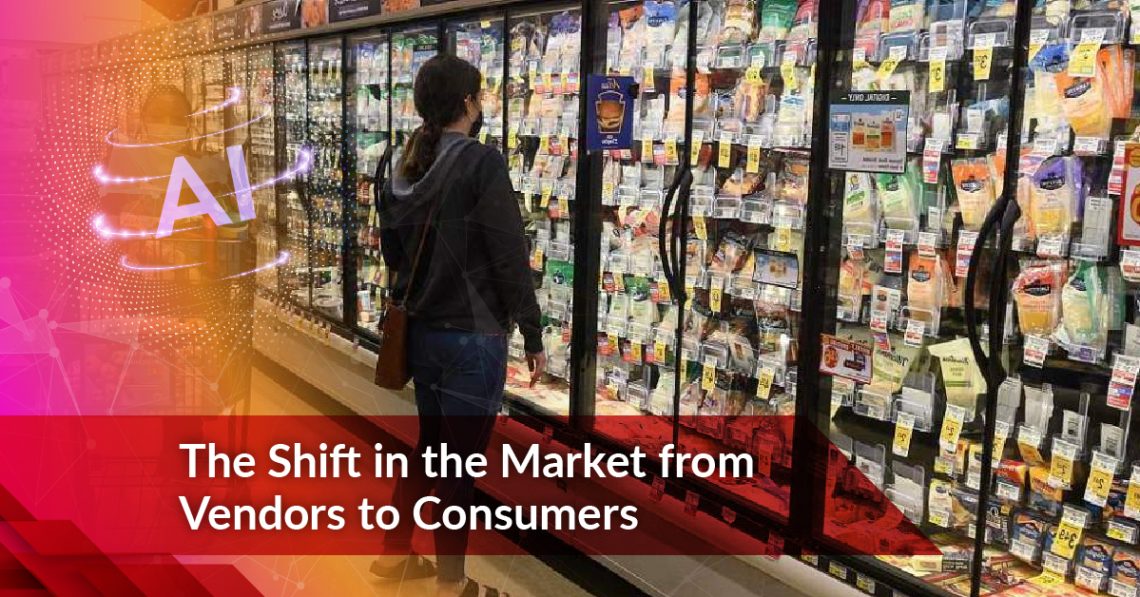Explore how AI technology is revolutionizing e-commerce.
The e-commerce sector is undergoing a significant transformation due to the ongoing progress of artificial intelligence (AI), particularly in the realm of live streaming. Unquestionably, the emergence of AI anchors has given the e-commerce sector new life and presented previously unheard-of prospects and problems. It’s an intriguing and progressive idea that AI might cause e-commerce to change from being a seller’s market to a buyer’s market, from sellers to buyers.
With the continuous advancement of AI technology, it is profoundly changing the face of the e-commerce industry, especially in the field of live streaming. The rise of AI anchors has undoubtedly injected new vitality into the e-commerce industry and brought unprecedented opportunities and challenges. The new point you mentioned, that AI may make e-commerce shift from a seller’s market to a buyer’s market, from sellers to buyers, is a very interesting and forward-looking thought.

First, there has been a notable gain in efficiency and a huge decrease in expenses with the rise of AI anchoring. In order to implement the traditional live broadcast sales model, real anchors must be hired, and it takes a significant amount of time and money to construct a live broadcast room, set up props, modify lighting, etc. These laborious procedures are unnecessary for AI anchoring. They only need to import text information to do automatic live broadcasts. To accommodate customers’ needs for live shopping, they can broadcast continually and round the clock to promote goods and deals. E-commerce businesses may adapt more swiftly to changes in the market and modify their sales tactics with greater flexibility thanks to this low-cost, high-efficiency live broadcast strategy.
Though AI anchors offer numerous benefits, we also need to address the issues they now have. Currently, AI anchors’ live broadcast content frequently lacks the spontaneity and personality of real anchors and is robotic and boring. They can answer queries in real time in the live broadcast studio, but their remarks frequently sound robotic and artificial, lacking in genuine human engagement. Furthermore, compared to actual anchors, the image of AI anchors also seems somewhat stiff and has a gap. These issues restrict the use of AI anchors in circumstances involving live broadcasts that are more intricate and humane.
We shouldn’t discount the importance or promise of AI anchors, either. We have good reason to think that as technology advances, artificial intelligence anchors will grow increasingly sophisticated and resemble actual human anchors. Future artificial intelligence anchors might be able to absorb natural language more fluently, comprehend viewers’ needs and feelings better, and offer more tailored purchasing recommendations. By mimicking the tone and mannerisms of actual anchors and applying deep learning, they can also add more life and naturalness to live broadcasts. Furthermore, as computer vision and image synthesis technologies continue to progress, AI anchors will appear more varied and lifelike .
Innovation in e-commerce models will also result from the advancement of AI technologies. Future e-commerce markets might progressively shift from being seller-dominated to being buyer-dominated, or from sellers to buyers. AI anchors will become consumers’ shopping assistants rather than merely merchandise merchants. In order to assist customers find the things they desire more quickly, they will offer personalised shopping recommendations based on their tastes, needs, and spending limits. Under this approach, e-commerce businesses will focus more on the wants and experiences of their customers and strive to gain their confidence and loyalty by offering superior products and services.
We still have a lot of ethical and technical obstacles to overcome before we can fully realise this revolution. To better comprehend the demands and feelings of customers, AI anchors must first develop their empathy and emotion recognition skills. In order to reach greater degrees of emotional computing and interaction, this calls on us to carry out more in-depth research and innovation on AI algorithms and models. Second, we must find solutions to the issues of privacy protection and data security. A significant amount of purchasing and personal data will be exchanged when AI anchors communicate with customers.
To stop data leaks and misuse, we must guarantee the security and privacy of this information. The ethical concerns with AI technology, such as refraining from biased suggestions and defending consumer rights, must also be taken into consideration.
We need to consider how to better integrate AI anchors into the e-commerce ecosystem in addition to technical and ethical challenges. AI anchors are currently mostly utilised in live sales, but they may eventually be extended to other domains like customer care and after-sales support. Through the integration and optimisation of AI anchors with other e-commerce platform functionalities, we can offer customers an enhanced and expedient purchasing experience. Additionally, we must consider the interaction between traditional anchors and AI anchors. The allure and sway of traditional anchors cannot be overlooked, despite the many benefits of artificial intelligence anchors. We ought to consider ways to blend the two to create complimentary advantages and jointly promote the development of the e-commerce industry.
In summary, the e-commerce sector has faced both enormous potential and challenges as a result of the development of AI technology. The emergence of AI anchors has enhanced productivity and decreased the cost of live broadcasting, but it has also opened the door for new e-commerce model innovation. We still have obstacles to overcome in the areas of technology, ethics, and ecosystems before we can fully realise these possibilities. We can only fully exploit the benefits of AI technology and advance the e-commerce industry’s sustainable development and advancement by persistently exploring and innovating.
Are you ready to dive deeper into the topics you love? Visit our website and discover a treasure trove of articles, tips, and insights tailored just for you!





